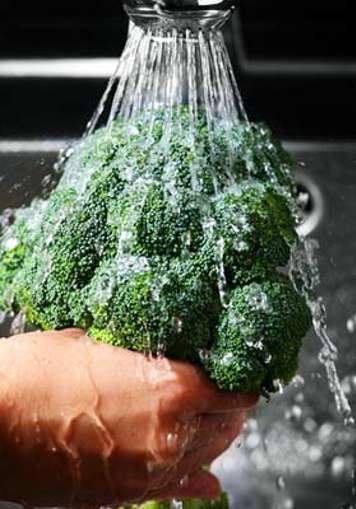
The immunosuppressants you need after your transplant suppress your immune system. This makes it easier for your body to accept the new organ, but it also makes it more difficult to fight off any infections.
Because your immune system is weaker, you need to take extra care with day-to-day activities, such as handling food. If you don’t, you risk coming in contact with harmful bacteria, which could lead to serious complications.
The four key words when it comes to handling food safely are:
- wash
- chill
- separate
- cook.
Wash
The first way to protect yourself against foodborne bacteria (bacteria found in or on food) is to wash your hands with warm, soapy water for at least 20 seconds. Washing your hands properly can remove almost half of all cases of foodborne illness.
Always wash your hands:
- before and after touching raw meat, poultry, fish or seafood
- after using the washroom
- after handling pets.
Don’t forget to wash fruit and vegetables too and clean all kitchen surfaces and utensils before and after you use them.
Chill
It is very important to store your food at the right temperature so that it never reaches the “temperature danger zone”. The “temperature danger zone” is the temperature at which bacteria can grow quickly and cause foodborne illness.
The best way to keep your food safe is to chill or freeze it. Cold temperatures prevent most harmful bacteria from growing.
The “two hour rule” says that you should refrigerate or freeze all perishables (fresh food without preservatives) within two hours of buying or preparing them. If the weather is hot (warmer than 26⁰C), reduce that time to one hour. When you go shopping, buy cold and frozen food last.
It is important to chill all fresh food promptly, but it is essential to do this for meats. This table lets you see how long you can safely store different types of meat.
Meat storage chart
Note: Count the days listed in this table from the date the meat was ‘packaged on’ (as shown on the label) or the date it was bought if it is from a butcher.
| Food | Fridge | Freezer |
|---|---|---|
| Ground meats, poultry or seafood | 1 day | 2-3 months |
| Variety meats (such as liver, kidney, heart) | 1-2 days | 3-4 months |
| Stew meat, ribs, stir-fry strips, kabobs | 2 days | 3-6 months |
| Chicken or turkey (whole or pieces) | 2-3 days | Whole – 12 months
Pieces – 6 months |
| Steaks, roasts, chops | 3 days | 8-12 months |
| Cooked meats or poultry, cold cuts (open package) | 3-4 days | 2-3 months |
| Vacuum packed roasts or steaks (unopened) | See package date | 10-12 months |
If you need to defrost any frozen food, leaving it in the refrigerator is the safest way to thaw it.
Separate
To help prevent foodborne bacteria, keep all raw meat, poultry, fish and seafood – and their juices – separate from each other and from all other raw and cooked food. The easiest way to do this is to store these foods on the bottom shelf of your refrigerator so no juices can drip onto other food.
It is also important to avoid spreading liquids from food packages onto other foods, cutting boards, utensils, dishes and any other surfaces for preparing foods.
Cook
Just as cold food needs to be kept cold, hot food needs to be cooked to the right temperature. Proper cooking kills bacteria such as
E. coli,
Salmonella and
Listeria and is the best way to make sure your food is safe to eat.
References
Health Canada, 2015. Safe Food Handling for People with Weakened Immune Systems. Health Canada: Ottawa






